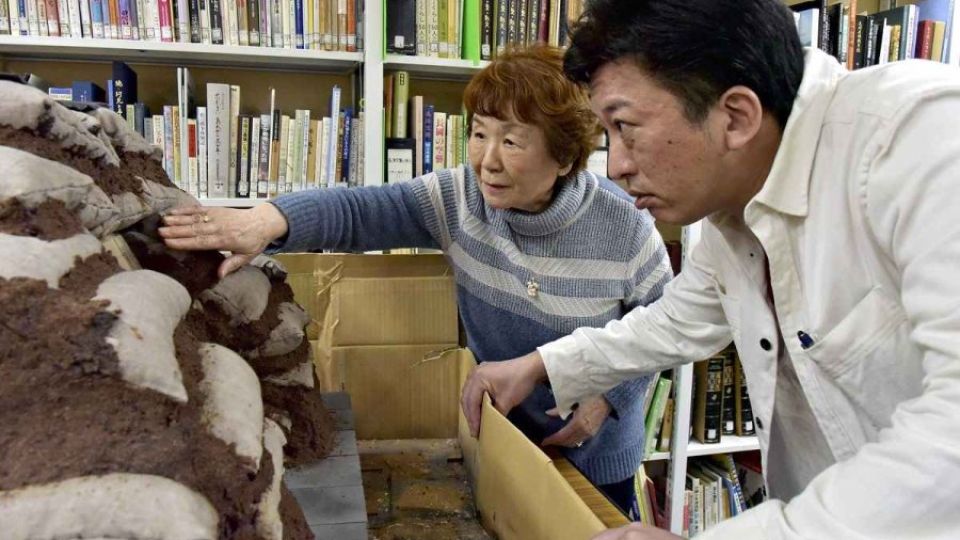February 27, 2023
TOKYO – A Tokyo woman has helped complete a model of an air-raid shelter like the one she fled into amid the falling U.S. firebombs that rained down on the capital near the end of World War II.
Haruyo Nihei, 86, is a resident of Kunitachi in western Tokyo. She wanted to convey the horrors of war amid the ongoing conflicts around the world, including Russia’s invasion of Ukraine.
The model will be on display at the Center of the Tokyo Raids and War Damage in Koto Ward, Tokyo, from March 10, the 78th anniversary of the Great Tokyo Air Raid.
In the early morning of that day in 1945, when Nihei was 8, she experienced the air raid in present-day Kameido, Koto Ward. Her father woke her up, and they evacuated to a nearby air-raid shelter with her mother, younger sister, and a neighboring family.
The underground shelter was built by her father together with the neighbor by digging a hole in the road and having sandbags piled on top.
While she was shivering from the sounds of explosions and screams of people coming from outside the shelter, his father told everyone that they would be consumed by fire and heat if they remained. Nihei’s family left the shelter, and she then had to run around to escape the raging fires. Before she knew it, she was separated from her parents and fainted.
Later, around dawn, her father found her on the street. She had narrowly escaped death.
The town turned into a burned-out wilderness, with countless charred bodies lying on the streets and elsewhere. Her family home was burned to the ground. In that air-raid shelter, the family next door who remained inside were found dead.
The Great Tokyo Air Raid was the indiscriminate bombing by U.S. B-29 long-range heavy bombers. The United States targeted Tokyo before dawn on March 10, 1945. Massive amounts of firebombs were dropped on eastern Tokyo, mainly in the present-day areas of Sumida and Koto Wards, burning down about 270,000 homes. The number of people affected by the bombing totaled approximately 1 million, with about 100,000 fatalities.
After the war, Nihei married and had two sons. While leading a peaceful life, she had never forgotten the scenes of the U.S. air raids.
When the center, which collects and exhibits materials on the air raids, opened in 2002, she began to recount her own experiences to the children who visited the center. What prompted her to create the model of the shelter was Russia’s invasion of Ukraine that began in February last year.
Day after day, TV news showed Ukrainians taking refuge in subway stations amid bombardment. Seeing the looks of children shivering in the cold, dark conditions, she recalled herself taking shelter underground. She wondered how fearful they would be feeling. Then she came up with the idea of exhibiting a model of an air-raid shelter to young people so that they could somehow perceive the horror of facing death in war.
Based on Nihei’s drawings and testimony, Takaaki Kozono, 44, a curator at the center, created a design at one-third the scale of the actual shelter.
With the help of staff members at the center, Nihei and Kozono handmade more than 100 scale sandbags and piled them up, while placing a lamp, a long bench, and wooden slats inside the shelter to reproduce as exactly as possible what the shelter was like. It took six months for them to complete the model.
Once the exhibition opens next month, Nihei plans to use the model of the air-raid shelter to recount the scene of the Great Tokyo Air Raid exactly as it happened.
“War is an act that makes light of human life,” she said. “I would be glad if this helps young people from now on think about peace.”

